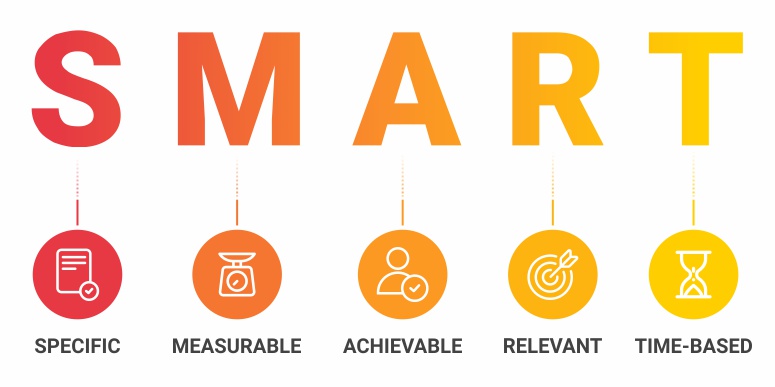Maximize Your Online Presence: Which Clear Goals are Crucial for Your Website's Success?

In the rapidly evolving digital landscape, a robust and dynamic online presence is of supreme importance for businesses of any scale. The digital world has redefined the way we interact with businesses and brands. A website is the face of your brand in the virtual world, and it is imperative to create an impactful and memorable impression on your target audience.
However, with a multitude of websites vying for attention, it can be challenging to stand out in the crowd. This is where the significance of setting clear goals and well-defined strategies comes into play. A website with a purposeful vision not only stands out from the rest but also attracts and retains the attention of the target audience.
With clear goals and strategies, businesses can leverage their online presence to effectively communicate their brand story, engage with their customers, and generate leads. A well-planned strategy ensures that your website is optimized for search engines, providing higher visibility and driving organic traffic to your site.
Defining Your Objectives

To truly blossom in the digital age, having a strong and effective online presence is essential. But with so many websites competing for attention, it’s important to have a clear and well-defined strategy in place that sets you apart from the rest.
The foundation of this strategy lies in defining your website’s objectives. Take a moment to consider what you want to achieve with your website – is it lead generation, increased sales, or brand awareness? By aligning your website objectives with your overall business goals, you’ll be able to measure your online success and achieve greater results.
Identifying Your Target Audience

Understanding your target audience is a crucial aspect of building a strong online presence. Your website should be tailored to your customer’s needs and preferences, with content that speaks directly to them and resonates with their problems. By knowing your target audience, you can design an online experience that caters to their unique interests and preferences, ultimately driving engagement and boosting conversions.
But how do you go about understanding your audience?
Start by conducting market research to gain insights into your customers’ behaviors, preferences, and problems. Use this information to craft buyer personas that represent your ideal customers, including details such as their demographics, interests, and problems.
Developing a Content Strategy

After understanding your target audience, the most effective way to achieve the best online presence is through a well-planned content strategy that not only aligns with your brand’s goals but also resonates with your target audience. By creating high-quality, relevant content, you can establish yourself as a trusted authority in your industry, while educating and informing your audience about your products or services.
However, creating content is just the first step. To truly maximize the impact of your content, you need to have a content calendar in place that outlines what content will be published and when. This ensures that you are consistently delivering fresh and engaging content to your audience, keeping them engaged and coming back for more.
By developing a content strategy and content calendar, you can increase brand awareness, build customer trust, and ultimately drive sales.
“A Goal Without a Plan is just a Wish”
Implementing Effective UI/UX Design

In today’s digital world, it’s not enough to simply have a website; it needs to be well-designed, visually appealing, and easy to use. This is where User Experience (UX) and User Interface (UI) design come into play. UX and UI design are key components in maximizing your online presence, as they create a seamless and enjoyable experience for users. By prioritizing UX and UI design, you can create a website that engages and converts your target audience.
To achieve this, it’s important to optimize your website for mobile devices, as more and more users are accessing the internet through their smartphones and tablets. This means designing for smaller screens and ensuring that your website is easy to navigate on mobile devices. Additionally, simplifying your design and using intuitive layouts can make your website more user-friendly.
Incorporating calls-to-action (CTAs) throughout your website is also important in guiding users through the conversion funnel. By strategically placing CTAs on key pages, such as product pages or contact forms, you can encourage users to take action and move toward a conversion.
Measuring and Optimizing

After Implementing UI/UX Designs, it’s essential to continually measure, analyze, and optimize your website’s performance. This involves closely monitoring website analytics to identify areas for improvement, tracking user behavior to gain insights into how your audience interacts with your website and making necessary adjustments to your strategy based on data-driven insights.
By taking a data-driven approach to website optimization, you can identify the key drivers of engagement and conversion on your site, and adjust your design, content, and user experience accordingly. This could involve making changes to the layout and design of your website, creating new content that resonates with your audience or implementing new features to improve the user experience.
Continuous optimization is essential to keeping your website fresh and relevant and can help you stay ahead of the competition. By regularly testing and refining your website, you can ensure that your online presence is always up-to-date, engaging, and optimized for maximum impact.
Why Setting Clear Goals is Important?

To achieve success in the digital space, it’s imperative to set clear and measurable goals for your website. Without specific goals in place, it’s easy to become sidetracked and lose sight of what you’re trying to achieve. Defining clear objectives allows you to concentrate on tasks that are vital to achieving your business objectives and eliminate activities that do not align with your goals. With measurable and attainable goals, you can evaluate your progress and make informed decisions about your online presence.
Setting clear goals is not only important for measuring progress but also for adjusting your strategy as needed. It provides a framework for making informed decisions about your website’s design, content, and functionality. Without goals, you may find yourself chasing after fleeting trends or trying to imitate other businesses without understanding how these approaches align with your unique objectives.
By setting clear goals for your website, you can allocate resources more efficiently and prioritize activities that align with your objectives. This helps you avoid wasting time and resources on ineffective activities that don’t generate the desired results. Clear goals also provide a sense of direction and purpose, which can be motivating and inspiring for your team and customers.You should use a SMART, Goal and Content Strategy.

Ultimately, clear goals provide a roadmap for success in the digital space. With a well-defined strategy in place, you can make informed decisions, measure progress, and achieve sustained growth over time.
In Conclusion, As you reach the end of this discussion, it is clear that nothing is more essential to achieve your business objectives than setting clear goals and strategies to boost your online presence. By pinpointing your objectives, identifying your target audience, devising an effective content strategy, implementing an outstanding UI/UX design, and continuously measuring and optimizing your performance, you can create a website that captures attention and yields remarkable outcomes. By utilizing the right approach, you can optimize your online presence, secure your place in the market, and experience consistent growth in the long run.
Are you ready for a Consultation with Expert for Increasing your Conversion Ratio & A Perfect Strategy Plan?
Click Here Dcodax is Always Here for your Help.





